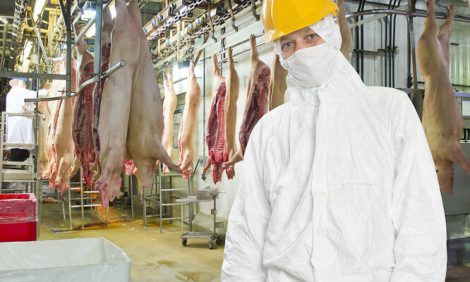



How Sustainable is Cultured Meat?
ANALYSIS - The unveiling of the first artificially produced meat in a Cultured Beef burger in London has raised questions over the sustainability of livestock production and the ability of the agricultural sector to feed a growing global population. The scientific team from the University of Maastricht in the Netherlands believes that commercial production of the Cultured Beef could start in 10 to 20 years’ time.
The scientific team from the University of Maastricht in the Netherlands believes that commercial production of the Cultured Beef could start in 10 to 20 years’ time.
The concerns are that by 2050, when the global population is expected to reach more than nine billion people and with climate change altering the way food is produced, the agricultural sector will not be able to meet the demand for meat protein.
The team, which is led by Professor Mark Post at Maastricht University (pictured), said that the total area occupied by grazing is equivalent to 26 per cent of the ice-free land surface of the planet, by far the single largest use of land in which man has an impact on the environment.
The researchers add that the production of feed crops for livestock also amounts to 33 per cent of total arable land and overall livestock production accounts for 70 per cent of all agricultural land and 30 per cent of the surface of the planet.
While the production of Cultured Beef is not expected to replace livestock production, the argument is that increasing livestock production as it stands will not be sustainable or be able to provide the meat protein demanded by the growing population. By 2050, it has been estimated that meat consumption is to rise by nearly 73 per cent, according to estimates from the Food and Agricultural Organization of the United Nations.
Demand is expected to be particularly strong in the East Asian and Pacific regions where estimates predict a 130 per cent increase in demand by 2030. In Latin American countries and the Caribbean, demand is forecast to rise by 58 per cent, in North Africa by 112 per cent and in Sub-Saharan Arica by 113 per cent.
The concerns are that the world cannot sustain such a growth in demand particularly as some sectors say that the current land use for livestock production has a strong impact on biodiversity and is a key factor in deforestation.
The researchers argue that the livestock sector is responsible for 18 per cent of greenhouse gas (GHG) emissions measured in carbon dioxide equivalents (CO2-eq) and the livestock sector accounts for more than eight per cent of global human water use. They add that it is also probably the largest individual sector that is the source of water pollution.
The Maastricht team say that the production of Cultured Beef requires less energy to produce than livestock production and hence emits fewer emissions.
To grow one tonne of Cultured Beef requires 26 to 33 GJ energy, 367 to 521 cubic metres of water, 190 to 230 square metres land, and emits 1900 to 2240 kg CO2-eq GHG emissions.
In comparison to conventionally produced European meat, cultured meat involves approximately seven to 45 per cent lower energy use - only poultry has lower energy use - 78 to 96 per cent lower GHG emissions, 99 per cent lower land use, and 82 to 96 per cent lower water use depending on the product compared.

Professor Post and his team also argue that the production of Cultured Beef will in the long run produce not only a more sustainable product but also a healthier product for consumption and a product that improves animal welfare.
The researchers say: “Although fat has to be used in production to add flavour to the meat, its content can be controlled. Cultured Beef allows for a healthier meat composition. The production of Cultured Beef allows for these harmful saturated fats to be reduced and the amount of polyunsaturated, cholesterol-lowering fatty acids increased.”
And with regard to animal welfare they argue: “The ability to produce such a large amount of meat from a small group of bovine cells, would result in considerably fewer slaughtered animals and fewer livestock farmed intensively.
“A study conducted by Datar and Betti in 2010 suggests that through reduced contact, Cultured Beef could also result in a dramatic decrease in the spread of diseases between humans and cows."
Prof Post believes it is possible to create a Cultured Beef product that is both cheaper than meat, indistinguishable in taste and texture, and further appealing to the consumer through causing limited suffering to animals.
The project is in its early stages and reports from the taste test in London were that the meat was bland and uninteresting.
Perhaps moves such as looking at the genetics and breed of the animal from which the stem cells are taken will improve flavour and more research will improve the quality of the final product, but the greatest battle the developers will have is in marketing the product to sceptical consumers.








